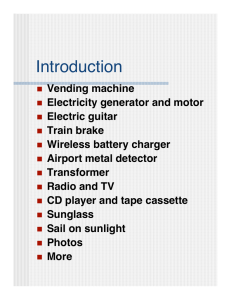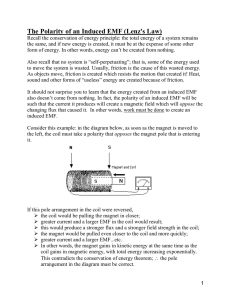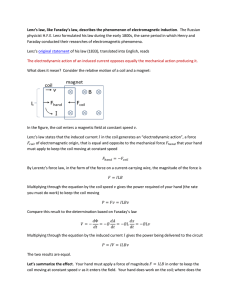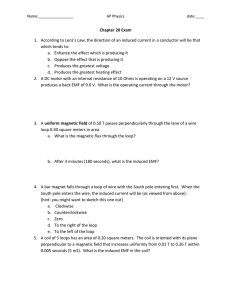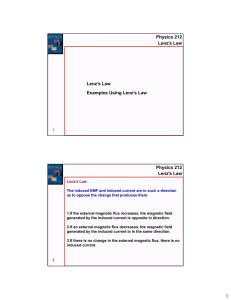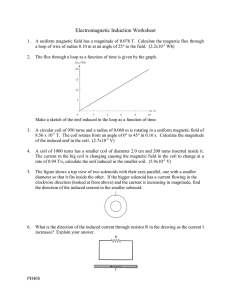Section 12: Lenz`s Law
advertisement
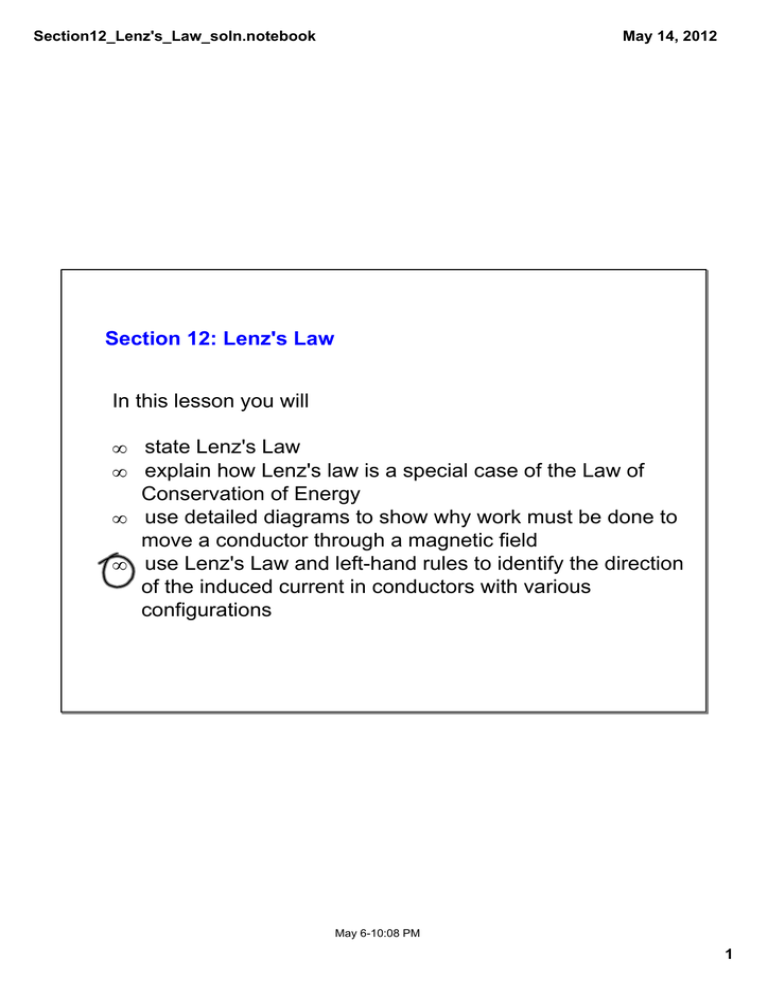
Section12_Lenz's_Law_soln.notebook May 14, 2012 Section 12: Lenz's Law In this lesson you will • state Lenz's Law • explain how Lenz's law is a special case of the Law of Conservation of Energy • use detailed diagrams to show why work must be done to move a conductor through a magnetic field • use Lenz's Law and left­hand rules to identify the direction of the induced current in conductors with various configurations May 6­10:08 PM 1 Section12_Lenz's_Law_soln.notebook May 14, 2012 In the picture above, the induced current causes a circular magnetic field that interacts with the permanent field. You should be able to see that on the side of the conductor away from you, the circular field and the permanent field are in the same direction (downward). Therefore these fields repel each other. That is, even as the hand tries to pull the conductor through the permanent magnetic field, the induced magnetic field of the induced current is fighting the motion! Heinrich Lenz put it this way: The direction of the induced current creates an induced magnetic field that opposes the permanent or inducing field. Lenz’s Law Whenever a current is induced (Faraday’s Law), the direction of the induced current is always such as to oppose the motion producing it. [Remember that word oppose. It is the most important word in the statement of Lenz's Law]. In simpler terms: if you try to pull a conductor through a magnetic field, you will have to do work because the induced magnetic field and the permanent field will fight against each other. May 6­10:10 PM 2 Section12_Lenz's_Law_soln.notebook May 14, 2012 This is all very good because the Law of Conservation of energy is satisfied. That is, in order to get electrical energy out, you must put mechanical energy in. You can't get something for nothing! When a current is induced in a conductor, the induced current creates a magnetic field. This magnetic field is called the induced field and it then interacts with the inducing field either attracting it or repelling it. Consider the following: If a North pole is inserted into a coil, there will be an induced current (either up or down). Assume that it is down. Then the right­hand side of the coil would be a south pole. A South pole will attract the North pole of the magnet pulling it into the coil. It would no longer be necessary to move the North pole into the coil. It would be attracted into the coil by the south pole of the coil. This is impossible because the induction coil would have to be producing electrical energy by itself without using any other form of energy. Energy can only be converted from one form to another; it cannot be created. Therefore, the current must be moving up. As a result, the induced field has a North pole at the right and this North pole opposes the inward motion of the inducing magnet. That is, the inducing magnet must be pushed into the coil against the opposition of the induced field. The work done in moving the magnet into the coil against the opposing force is transformed into electrical energy of the induction coil. May 6­10:36 PM 3 Section12_Lenz's_Law_soln.notebook May 14, 2012 Examples: 1. Determine the direction of the induced current. 2. The set­up in this exercise is similar to that of Faraday's iron ring (without the ring.). Determine the current direction in the secondary coil at the instant the switch is closed in the primary coil. Do questions: 1 page 673, 4 and 5 page 686 16­20 page 687 ­ 688 May 6­10:39 PM 4 Section12_Lenz's_Law_soln.notebook May 14, 2012 May 6­10:48 PM 5 Section12_Lenz's_Law_soln.notebook May 14, 2012 May 6­10:48 PM 6 Section12_Lenz's_Law_soln.notebook May 14, 2012 May 6­10:49 PM 7 Section12_Lenz's_Law_soln.notebook May 14, 2012 May 9­8:54 AM 8

